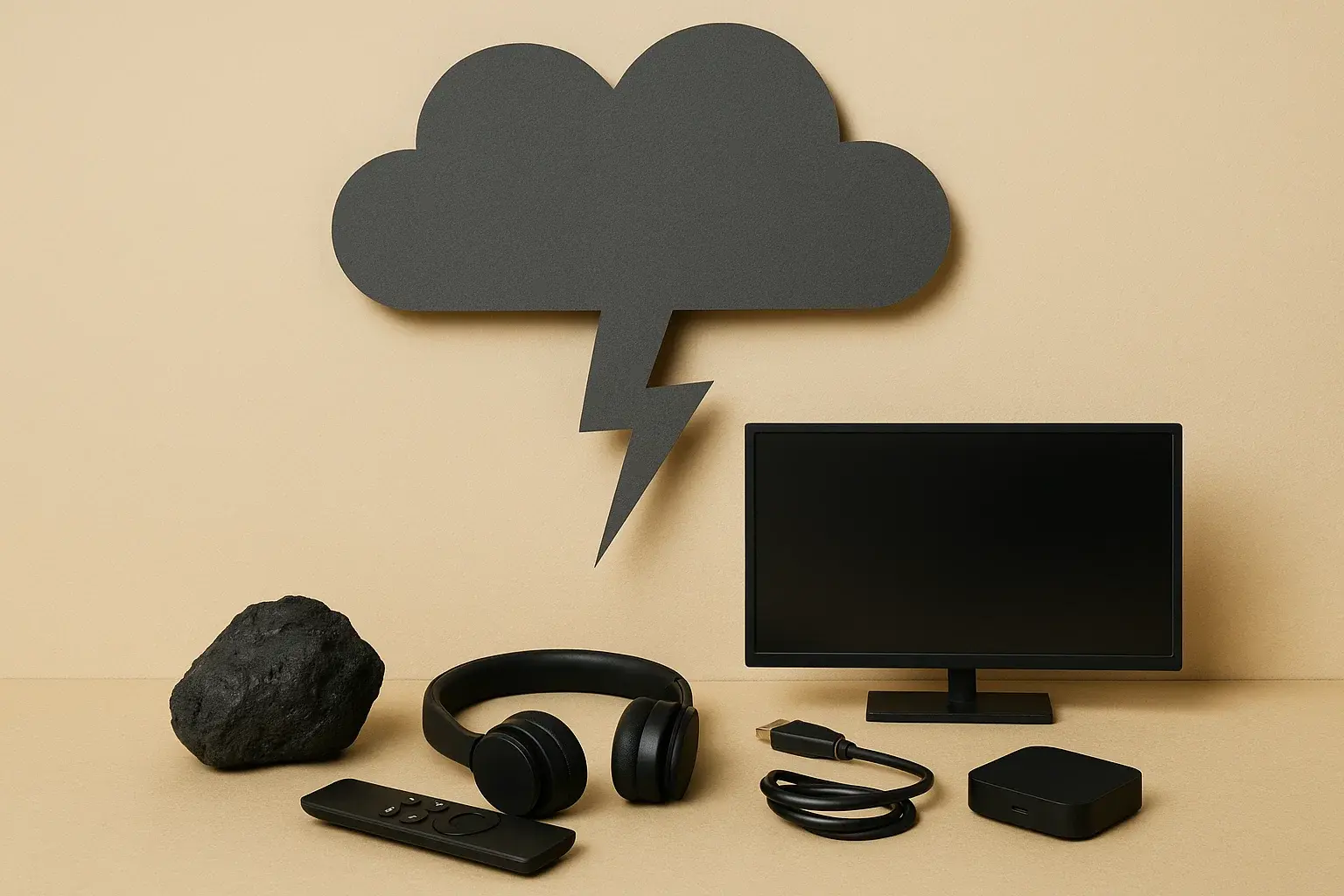The Price of Planned Obsolescence: Choosing Repairable Tech to Reduce E-Waste

In our fast-paced technological landscape, the allure of the newest gadget is often strong. Driven by relentless marketing cycles and the promise of enhanced features, we are frequently encouraged to upgrade our smartphones, laptops, and other electronic devices at an ever-accelerating pace. This culture of planned obsolescence, whether intentional or simply a byproduct of rapid innovation, has a significant and detrimental impact on the environment, contributing to a massive and growing problem: electronic waste, or e-waste. The constant churn of short-lifecycle gadgets not only strains our wallets but also places an unsustainable burden on the planet's finite resources and ecosystems.
The environmental consequences of our collective appetite for the latest tech are far-reaching. The manufacturing of new electronic devices is an energy-intensive process that requires the extraction of precious and often conflict-ridden minerals. It generates significant greenhouse gas emissions and utilizes vast amounts of water. Furthermore, the premature disposal of these devices as e-waste leads to the accumulation of toxic substances in landfills and the loss of valuable recyclable materials. The sheer volume of e-waste generated globally is staggering, and its improper handling poses serious risks to both human health and the environment. The rapid turnover of gadgets also fuels a linear economy, where resources are extracted, made into products, used briefly, and then discarded, rather than a circular economy where materials are reused and recycled, minimizing waste and resource depletion.
The Rise of Repairable and Modular Electronics
Recognizing the unsustainability of this cycle of short-lifecycle gadgets, a counter-movement is gaining momentum: a growing demand for more durable, repairable, and modular electronics. Consumers are increasingly questioning the necessity of frequent upgrades and seeking out devices that are designed to last, can be easily fixed, and allow for component upgrades rather than whole-unit replacements. This shift towards mindful consumption in the tech sector holds significant promise for extending the lifespan of our gadgets, reducing e-waste, and conserving valuable resources. By challenging the norm of disposable technology, we can send a powerful message to manufacturers that longevity and repairability are valued by consumers.
Modular Devices: Empowering Upgrades and Extending Lifespan
One of the most compelling alternatives to short-lifecycle gadgets is the emergence of modular devices. These innovative electronics are designed with user-replaceable components, allowing individuals to easily upgrade specific parts, such as the battery, camera, screen, or even the processor, without having to discard the entire device. Companies like Framework are pioneering this approach with modular laptops, offering a sustainable and customizable alternative to traditional models. By empowering users to repair and upgrade their devices, modularity extends their lifespan, reduces e-waste, and promotes a more circular economy for electronics. The ability to tailor a device to specific needs and upgrade individual components as technology evolves means less waste and more personalized technology.
Repairable Electronics: Fighting for the Right to Fix
Another crucial aspect of combating planned obsolescence is the growing demand for repairable electronics. Traditionally, many tech companies have made it difficult or impossible for consumers and independent repair shops to fix their devices, often citing proprietary designs, glued components, or the unavailability of spare parts and repair manuals. However, a global "right to repair" movement is advocating for legislation and industry changes that would grant consumers and independent repairers access to the necessary parts, tools, and information to fix their electronics. Companies like Fairphone have embraced repairability as a core design principle, creating smartphones with readily available spare parts and clear repair guides. Supporting brands that prioritize repairability empowers consumers to extend the life of their devices, reduces the flow of e-waste, and fosters a more self-reliant and sustainable approach to technology ownership. The right to repair movement emphasizes that consumers should have control over the products they own, including the ability to fix them.
Refurbished Tech: Giving Devices a Second Life
Finally, the market for refurbished tech offers a sustainable and often more affordable alternative to buying new gadgets. Refurbished electronics are pre-owned devices that have been professionally inspected, cleaned, and repaired to a fully functional condition. Purchasing a refurbished smartphone, laptop, or tablet gives a second life to an existing device, reducing the demand for new manufacturing and the associated environmental impact. Online marketplaces like Back Market specialize in high-quality refurbished electronics, providing consumers with a reliable and sustainable option. Often, these devices come with warranties, offering peace of mind to buyers. Choosing refurbished tech helps to decouple technological advancement from the constant production of new devices, promoting a more circular flow of electronics.
The Power of Mindful Tech Consumption
By consciously choosing modular devices, supporting brands that prioritize repairability, and considering refurbished tech, we can collectively push back against the unsustainable cycle of short-lifecycle gadgets. These mindful consumption choices not only save us money in the long run by avoiding frequent upgrades but also play a vital role in reducing the ever-growing mountain of e-waste and conserving the planet's precious resources for future generations. Embracing a mindset of repair, reuse, and longevity in our relationship with technology is a crucial step towards a more sustainable and responsible digital future.
Related Blogs

Neutralizing Your Tech Footprint: Choosing Carbon-Neutral Tech Purchases
Support climate action by opting for carbon-neutral certified tech and offset programs.

The Silent Energy Thief: Cutting Down Idle Device Usage for a Sustainable Digital Footprint
Improve energy efficiency and extend device life by implementing power-saving settings.

The Unseen Gigabytes: Cutting Your Streaming Carbon Footprint
Reduce your digital carbon footprint by adjusting streaming quality and habits.

Swipe Right on Sustainability: How Digital Decluttering Cultivates a Greener Lifestyle
Insights on digital decluttering for a greener lifestyle in a sustainable way.

Decoding Disposal: Your Essential Guide to Responsibly Recycling E-Waste
Insights on the rise of ethical tech in a sustainable way.

Surfing Sustainably: Unveiling the World of Eco-Friendly Browsing
Insights on eco-friendly browsing in a sustainable way.
Stay in the Loop
Get tips and insights tailored to your interests — no spam, just sustainability.